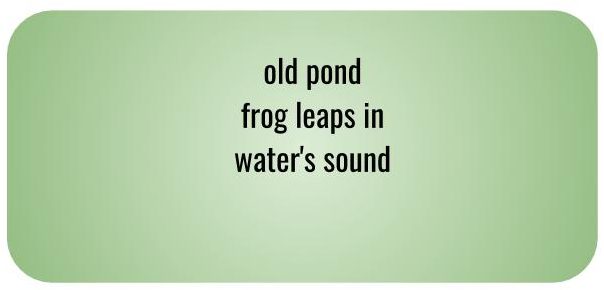My interest in haikus was recently rekindled by James May’s Our Man in Japan series in which he frequently bookends the episodes with a haiku of his own. Accordingly, I started searching for a haiku ebook on Libby (which if you are not using, you should give it a try!) and I found Haiku: Classic Japanese Short Poems. The book has haikus in Romaji, English, and vertical Japanese. The book is spartan in its use of graphics and has a very simple structure much like the subject matter it deals with. There are about 60-70 haikus in it from the four great haiku masters.
Haiku, for those hearing about it for the first time, is a form of Japanese poetry conforming to certain constraints on syllables (5-7-5) and split over three lines. The book itself does not delve sufficiently enough into the history of haiku, though the Wikipedia page on Haiku proves more than sufficient here. Listing haikus often commence with the famous Matsuo Bashō’s old pond haiku which goes like:

As it should be evident at this point, they are remarkably short, and often involve nature and seasons. They behoove the reader to invoke their imagination and experience the verses prima facie. To help with this, the haiku verses are often read slowly, more akin to sipping tea gently. A tabula rasa-esque mindset, for that short period, helps. As a result, the haiku focuses as much on the material as the reader too, a dichotomy similar to an artwork in a gallery and a keen observer.
Historically, haikus started as constituents of larger bodies of work called Renga, a form of Japanese collaborative poetry. The opening stanza of a Renga is a Hokku. From the time of Basho, hokku started appearing by itself, more often alongside some prose in a form called Haibun. It was Masaoka Shiki who renamed hokku to haiku and further established its independence. Over this evolution, the form changed from one of the complex rules and knowledge of classics to a style relying on ordinary situations and language to convey spirituality.
English literature on its own has had poems relying on a similar flow and imagery. One of the most popular ones in this genre (known as Imagism) is The Red Wheelbarrow by William Carlos Williams. This poem has been a recurring theme in a recently concluded (and one of my favorites) thriller series – Mr. Robot.
Reading this made me wonder if I had come across similar instances of a part of something taking a form of its own and achieving renown on its own. Incidentally, and for reasons unbeknownst to me, this reminded me of Seinfeld’s muffin top episode. Seinfeld is, many a time as portrayed in the show itself, the show about nothing, and about humor in simplistic everyday situations. In this way, it shares similarities with the haikus. In that episode, the muffin top gains more popularity than the muffin itself and has short-lived independence as a delicacy of its own. Much like the haiku, in daily life, it is often the little things and the diurnal ongoings which bring unvarnished joy and eudaemonia.
Throughout history, there have been multiple other instances where a part of the whole became independent and gained a renewed identity of its own. Minimalist artworks, which often invite the observer to connect the dots or fill the remaining canvas with their imagination, can be considered haiku-like. Minimalism in general also takes a similar approach based on subtraction than addition for enrichment.
While haikus got shorter from their ancestors, they retained, and perhaps even crystallized the profundity of their wisdom. To conclude, let’s end with another haiku, this one from Kobayashi Issa –


